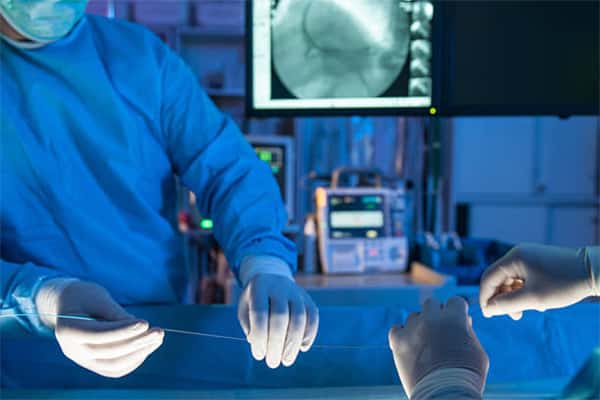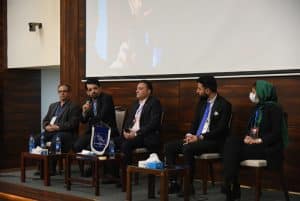Table of Contents
Angioplasty is a good way to treat blocked blood vessels and create a normal blood flow and send this blood to the blocked organs and arteries. Today, angioplasty is performed in various clinics and hospitals around the world. Angioplasty is one of the best methods to treat problems related to blockage of arteries. Angioplasty is more popular than other methods such as coronary artery bypass graft surgery.
It can also be said that angioplasty is safer than other methods. In this article from Moj Aramesh Amitis Health Tourism Company, we are going to talk about angioplasty and common questions that may be asked to different people in this regard.

What is angioplasty?
Angioplasty is generally performed to prevent blockage of blood vessels and normal blood flow in the body. Blood vessels in the body can carry vitamins and minerals to other organs and tissues in the body. Excessive consumption of fats or cholesterol can clog blood vessels. Sometimes the blood vessels do not become completely blocked, but narrow./Angioplasty in Iran
Blockage of blood vessels can cause changes in blood flow in the body. As a result, blood supply may be impaired and various diseases may occur. Fats and factors that cause narrowing of the arteries eventually narrow the arteries and progress to the point where blood flow is eventually completely blocked. Finally, if the blockage of the arteries is not treated with angioplasty surgery, it may cause a stroke or heart attack.
What are the steps before angioplasty?
Because most people have concerns about angioplasty, one of the most important questions they have about angioplasty is the preoperative stages.
- After you have been seen by a doctor and angioplasty has been suggested as the best treatment for you, you should first change your diet so that your body is somewhat cleansed before the operation.
- When you have an angioplasty, you must sign a consent form. Signing this form is very important. Because of the blockage of the arteries and the high importance of the surgery, you must fully express your consent to the operation.
- Try to take all the medicines prescribed by your doctor properly before the operation and do a good research so that you are not allergic to them.
- You will have a blood test as directed by your doctor to determine the extent of your blood clots and clogged arteries.
- It is best to tell your doctor thoroughly about your medical history and illness before angioplasty surgery. For example, if you have heart disease or problems with bleeding or blood clots and you are taking certain medications such as aspirin, you should definitely discuss this with your doctor. Because angioplasty surgery may be dangerous for you.
In general, angioplasty can be performed by a doctor and in different ways, depending on your medical history and the severity of the disease. The preoperative steps will be different for each person. But your doctor will try to get an initial checkup of you before surgery.
What is the procedure for angioplasty?
Before the angioplasty operation begins, your doctor will inject you with a sedative so that you do not have any worries or problems about the operation. Anesthesia is not usually used in this type of operation. However, physicians may use anesthesia at their discretion. Cardiologists, cardiologists and nurses are present in the operating room.
Also, before the angioplasty operation, drugs must be injected into the body to prevent blood from clotting and coagulating. These drugs are injected into the hand or arm through a catheter, and it takes some time for them to work completely in the patient. Because of the importance of this procedure and the obstruction of blood flow, your doctor will thoroughly examine vital signs such as heart rate, blood pressure, and oxygen levels to make sure that you do not have any problems before starting angioplasty.
Angioplasty can be performed through the groin, arms or wrists. For this reason, the nurse completely disinfects the arm or wrist, as well as the groin. The local doctor then anesthetizes the area to be operated on and makes a small incision in it. This area can be the arm, hand or groin. The doctor then inserts a thin wire into your blood vessels. This wire is not very thick and is used only because the doctor can fully identify the inside of the body and the place of blockage of blood vessels.
How is the location of the obstruction identified?
When a catheter is inserted into a vein from the incision site, your doctor can use an x-ray to look at the image inside your vein from the monitor, thereby detecting where the arteries are blocked or narrowing. The doctor then inserts a catheter, which is a thin tube into the bloodstream. The substance, which shows the image to the doctor completely with the help of X-rays, then enters the body through a catheter.
By moving the catheter and observing the image inside the arteries from the monitor, the doctor can finally detect the location of the narrowing and blockage of the artery. The doctor then sends a stent, which is used to open the arteries, to the end of the catheter, where the artery is blocked. At this point, a small balloon should begin to inflate with the stent and open the narrowed or blocked vessel. It does not matter in which part of the blood vessels the obstruction is located, because the doctor must do this each time for the blocked area.
No specific time can be set for angioplasty. Because the number of blocked arteries may be large and the doctor’s skill in performing angioplasty may vary, your angioplasty operation may take several hours.
What is a stent and how does it work?
A stent is a very small metal mesh tube that prevents narrowing of blood vessels and can prevent the blood vessels from blocking or narrowing again by being placed at the site of the vessel after angioplasty. The doctor tries to pass the stent through the bloodstream to a part of the blocked vessel. The stent is located on the front of the catheter.
Depending on his skill, the doctor can inflate the balloon that enters the obstruction site with the stent. The stent can then be expanded just as much and placed completely at the site of the blockage. The doctor does not remove the stent from the blood vessel; Instead, the stent remains permanently in the blocked area of the vessel so that the blood vessels do not become blocked again.
The doctor removes the balloon and catheter from the bloodstream after making sure the arteries are opening and the blockage in the blood vessels is gone. The point here is that the stent does not enter the bloodstream alone; Instead, drugs are used to open the arteries.
What is postoperative angioplasty care?
It is true that angioplasty can open the arteries and prevent blockages, but you should take care after the angioplasty so that the blood vessels do not become blocked again and the blood vessels do not become blocked in other places; Because you have had a blockage in your arteries before.
- The first step you need to take after angioplasty is to reduce the amount of fat you consume through food.
- Try to prevent weight gain and lose weight by exercising.
- If you have conditions such as high blood pressure or diabetes, try to control them with the help of medications.
- Eat more plants and plant foods and do aerobic exercise that is good for your bloodstream.
- Avoid alcohol and smoking.
- It will take about 14 days for you to complete your recovery.
- In the first days after angioplasty, it is better not to do sports and physical activities and to rest as much as possible and do not be very active.
- Take all the medicines prescribed by your doctor.
- Have a proper diet.
Angioplasty surgery in Iran
Heart problems, as well as problems with blockage and narrowing of blood vessels and reduced blood flow, have been observed in many people around the world. For this reason, cardiologists have gained a great deal of experience with angioplasty in recent years. Angioplasty is performed in Iran at a reasonable cost and under the supervision of experienced specialists.
Concluding remarks
In this article from Moj Aramesh Amitis Health Tourism Company, we talked about angioplasty and the common questions that may arise about this surgery for different people. Angioplasty can be a good way to prevent blockage of blood vessels and thus prevent dangerous diseases such as heart attack and stroke. Moj Aramesh Amitis Health Tourism Company can provide many services related to angioplasty in Iran to you dear ones.
In Moj Aramesh Amitis Health Tourism Company, experienced and skilled experts can perform all pre- and post-operative procedures for you and accompany you throughout the course of angioplasty surgery in Iran.





